I recently got my CPR certification at One Beat CPR.
It was something I wanted to have done, rather than something I wanted to do. It’s hard to sacrifice precious weekend hours, especially hours with childcare, so I was a little reluctant as I drove to class on a bright, beautiful Saturday morning in the middle of the rainy season. The beach beckoned, but this had been on my To Do List for years, and it was time to check that box.
I walked into class determined to sit in the front row, ask a lot of questions, volunteer, and insist on lots of hands-on practice. You see, about ten years earlier I had been been taught CPR by the Red Cross, but even as I was handed my freshly-inked certification card, I felt shaky about my skills. After half a day of instruction in a windowless room, I walked out tired and confused, rather than actually prepared for an emergency.
Imagine my surprise when the first thing I learned at One Beat CPR was that my experience was common. Many people leave Red Cross trainings ready to call 911, and that’s about it. Although their instructors receive training, apparently they aren’t necessarily working CPR in the field. This causes some instructors to place too much emphasis on not making mistakes, and relating an overwhelming amount of technical details, which can leave students befuddled.
One Beat CPR was founded by Lon Rosen, a paramedic on a mission to educate the public about CPR. He is motivated by his work in the trenches everyday, and his personal experience with his own blue-lipped newborn baby (whom he saved). All the CPR instructors at One Beat CPR work in emergency situations on a daily basis. They include paramedics, police officers, firefighters, and doctors. This gives them unparalleled knowledge and a wealth of anecdotal information to imbue to the masses. Our entire class was a lesson in simplicity which left me feeling extremely confident in my own abilities.
The number one lesson they emphasize is that it is better to do something that might not be perfect, rather than simply waiting for help. In ideal circumstances it takes 4-6 minutes for first responders to arrive after a 911 call. Every minute that a person is unconscious during cardiac arrest takes away 10% of their chance of survival.
I’m going to share a few facts I learned with you, but please don’t consider yourself adequetly trained just by reading my article. Get yourself certified. If you live in South Florida, I highly recommend One Beat CPR. If you live elsewhere and the certification programs are by the Red Cross, go to those classes. Just ask questions, focus on the basics, and make sure you feel confident when you walk out the door, ready to be a hero.
How to Save a Life
1. Call 911.
When someone is unconscious, it is critical to call 911 first. Do not assume that someone in a crowd is doing this, because everyone might make the same assumption while no one actually makes the call. Ask someone specifically to make the call: Lady in the green shirt, can you call 911?
If you are alone with your child, perform one minute of CPR first and then make the call.
2. Use a defibrillator if it’s available.
That is the best option. These machines are amazing and will guide a clueless, uncertified person through the entire process. There are different inserts for adults, children, and babies. Use the correct one and a voice will guide you through the process. These machines will sense whether or not the patient needs defibrillation; 70% will. It will not shock someone who doesn’t need it. Afterwards, the machine will guide you through CPR, including keeping the beat.
These are real heroes and prices have come down a lot over the last few years. One Beat CPR encourages widespread use of them, so consider being an advocate in your business, school, or home. They highly recommend Philips HeartStart Home Defibrillator.
3. Perform CAB (Compressions, Airway, Breath)
Whether you are working on an infant, a child, or an adult, the method is the same. Perform compressions using locked arms, pressing in the middle of the patient’s chest all the way down (you’ll feel it). Thirty compressions are followed by an airway check and 2 breaths (ONLY IF YOU HAVE A PROTECTIVE MASK!)
Here are the CPR variations.
Use two hands for an adult.
Use one hand for a child (ages 1-6). It’s a good idea to keep the other hand behind your back, so you don’t unwittingly press down on their head.
Use two fingers (TEXTING THUMBS) for a baby.
Why the Protective Mask is Critical
One Beat CPR gave me a little key chain pouch with a mask inside. When our instructor told us not to perform breath without it, I asked for clarification.
Do you mean we don’t have to do breath without a mask, or that we shouldn’t?
He was very clear: Do not do breath without the mask.
He then related a story of a thirty-eight year old police officer killed in the line of duty. Six years earlier that officer had performed breath on a 3 month old baby without a mask. The baby vomited into his mouth. He spit it out right away, but a little had gotten into his lungs which caused a respiratory infection. He never recovered from it and died six years later.
That story blew my mind. There were many more like it, which is what made this training so rich. Before hearing that, I wouldn’t have thought twice about using breath on a child or even most normal-looking people. I wouldn’t have truly understood the risk. I hooked a mask to my and my husband’s key chains that afternoon.
There was other information about choking (The Heimlich maneuver works wonders.) and legal implications (You have zero liability for trying.). The class took two hours, and I left feeling prepared and grateful.
Last Call
If you need one more tidbit of motivation to attend class, you might be interested to know that Lon was featured in the Hot Firefighter’s of Miami Calendar.
But you just really want to save lives, don’t you?

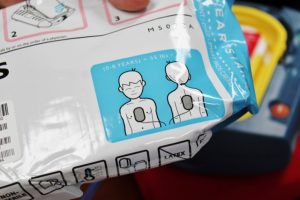

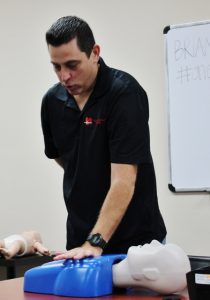

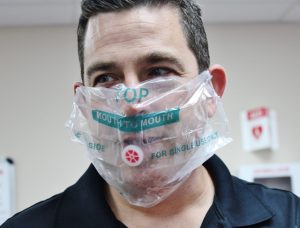
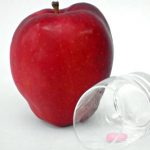
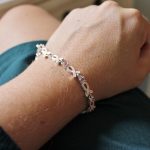



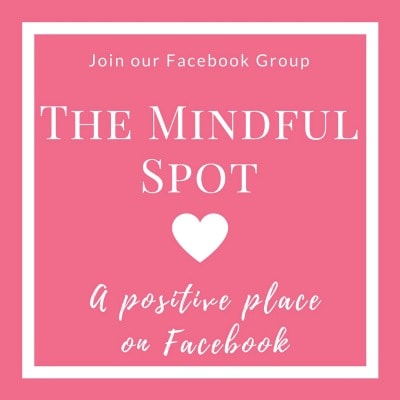
Leave a Reply